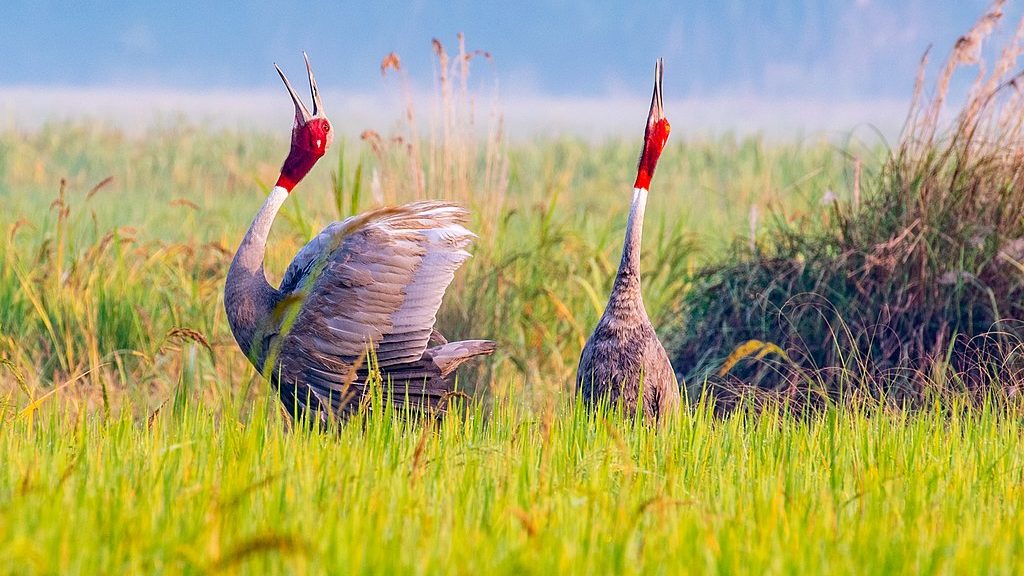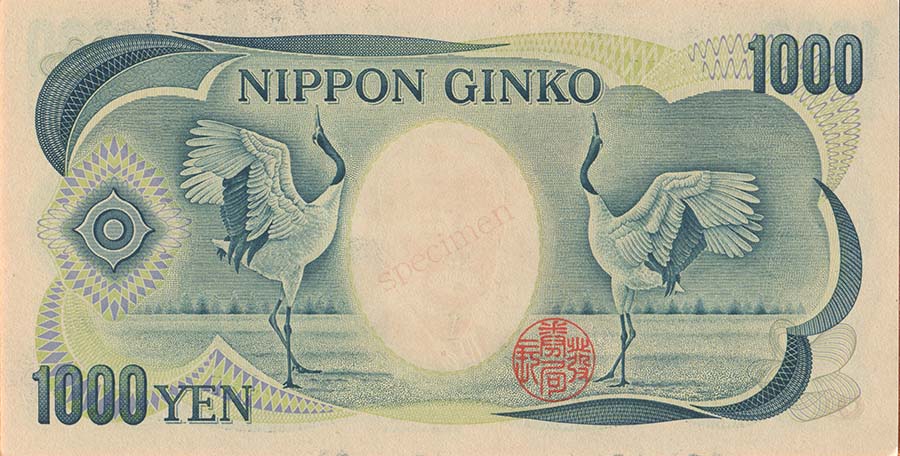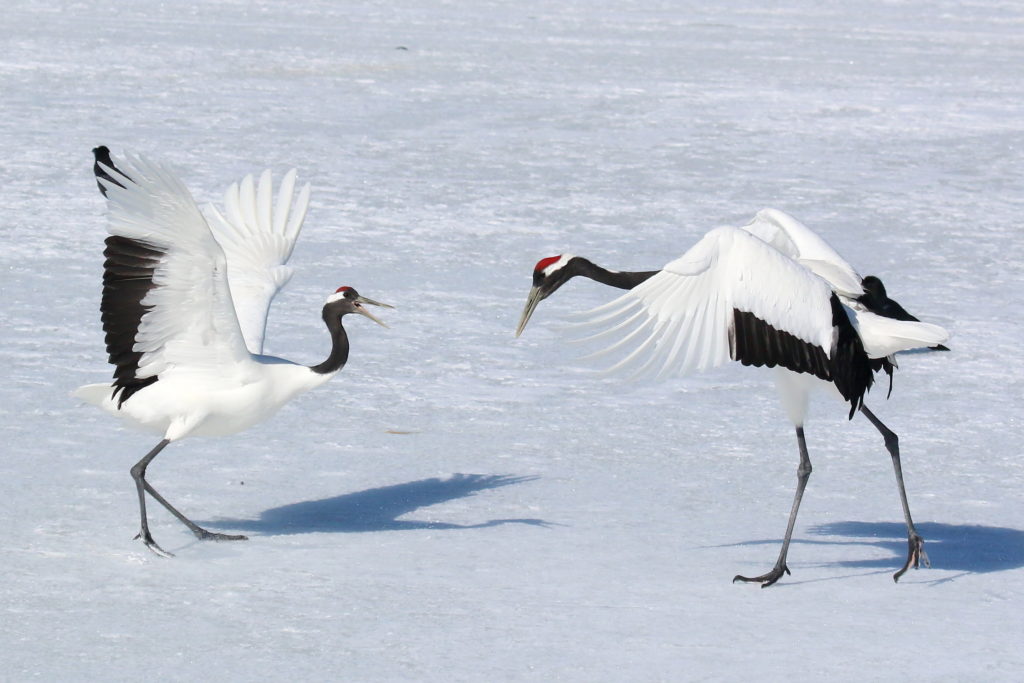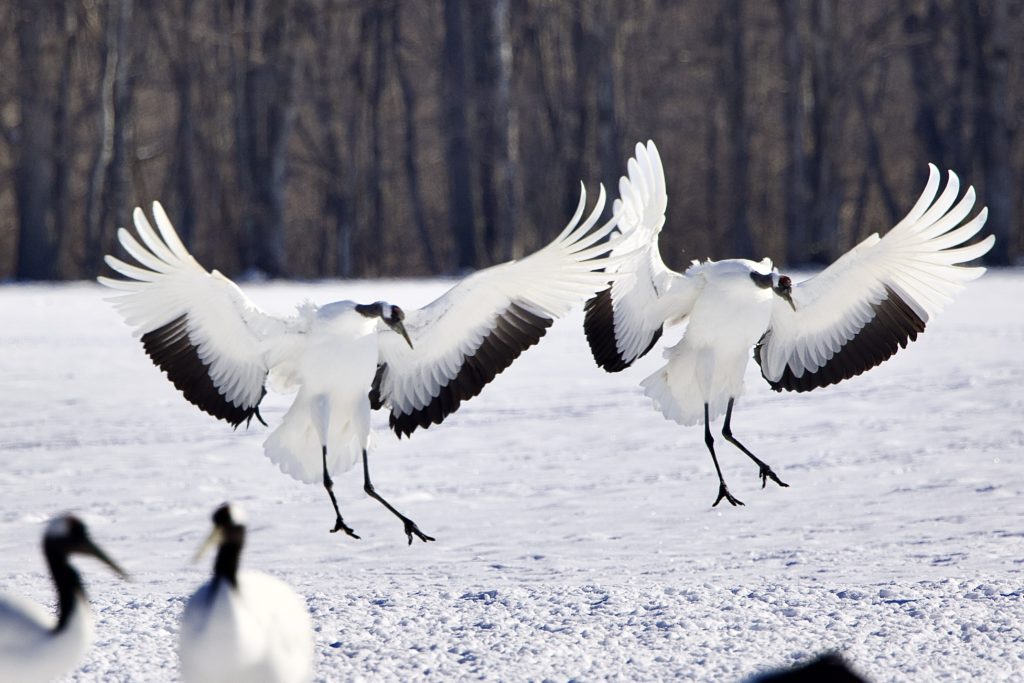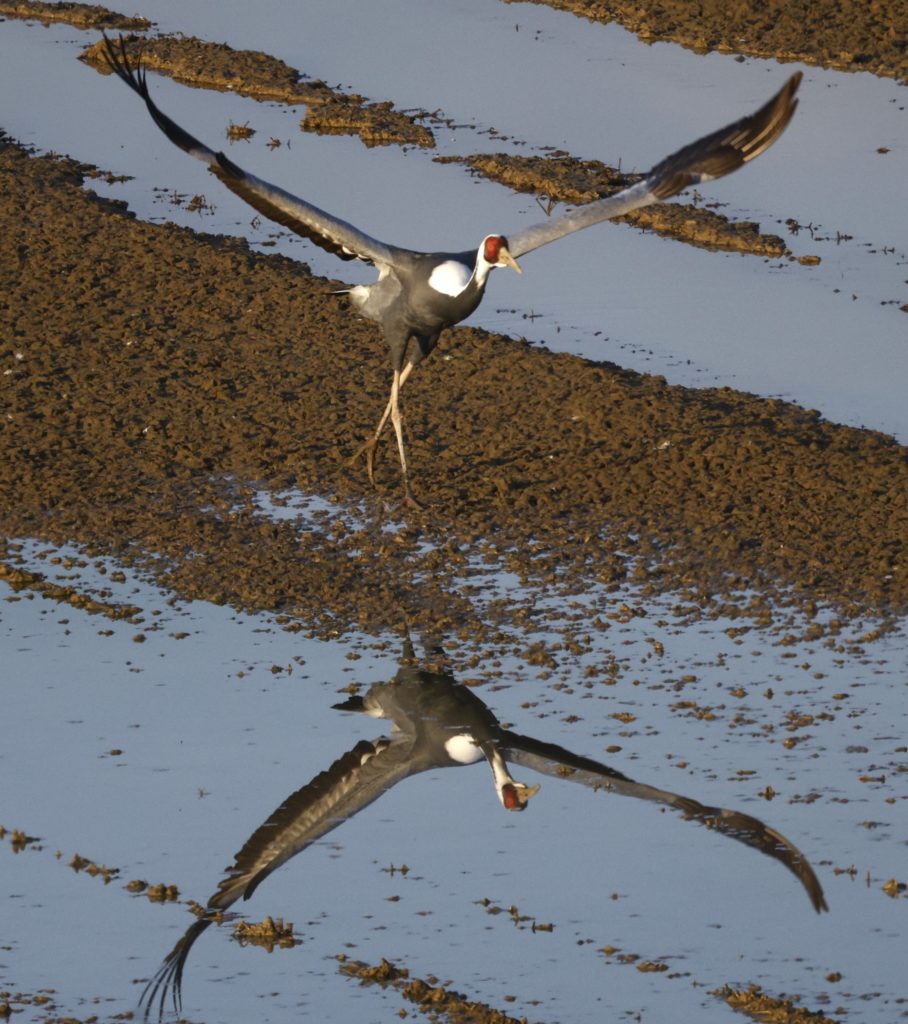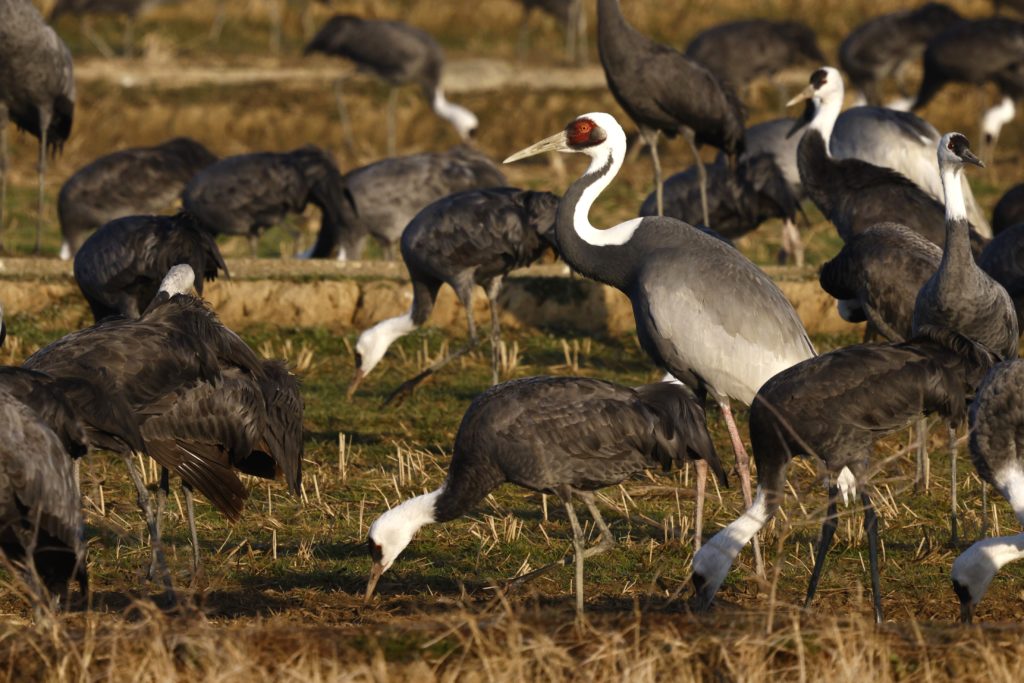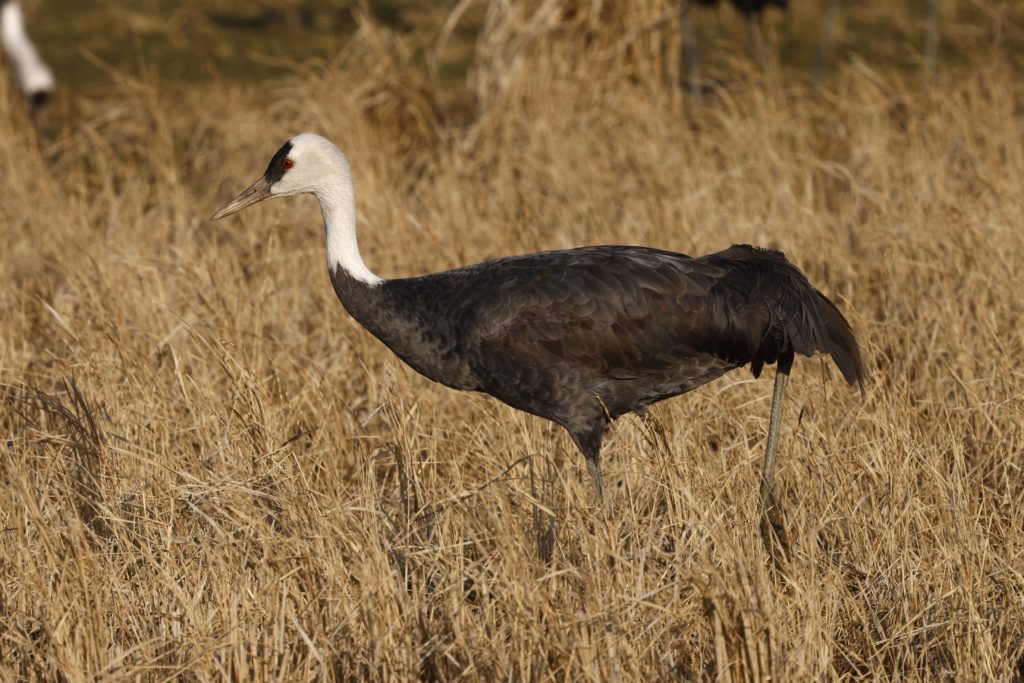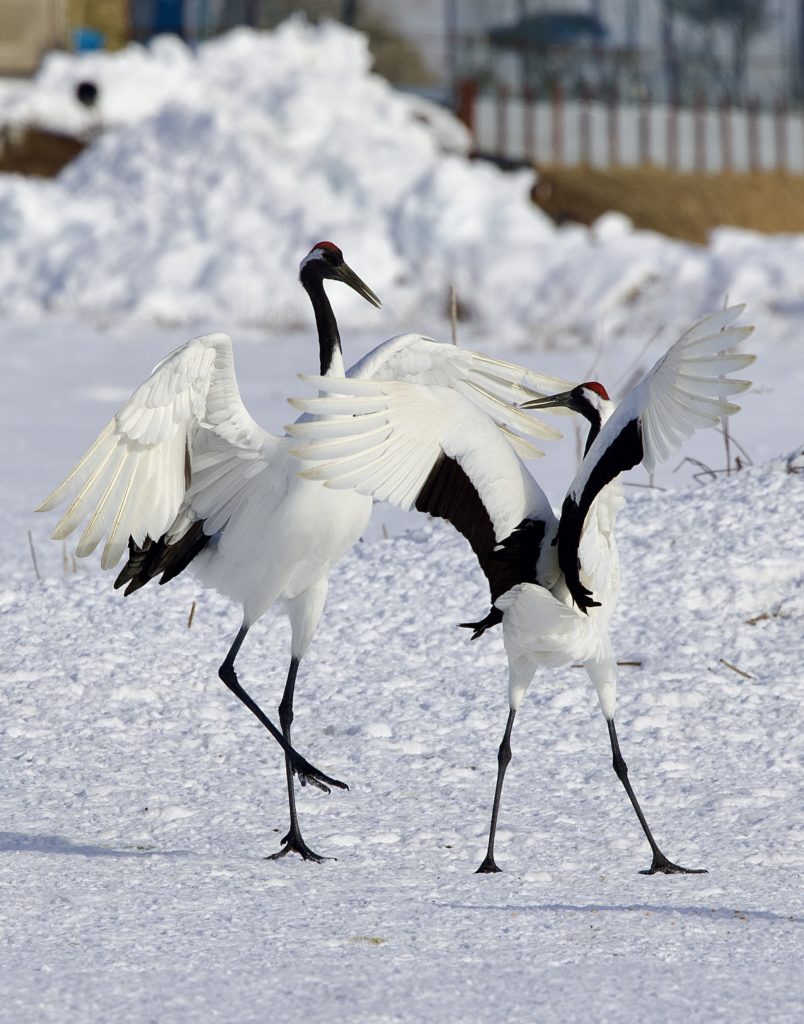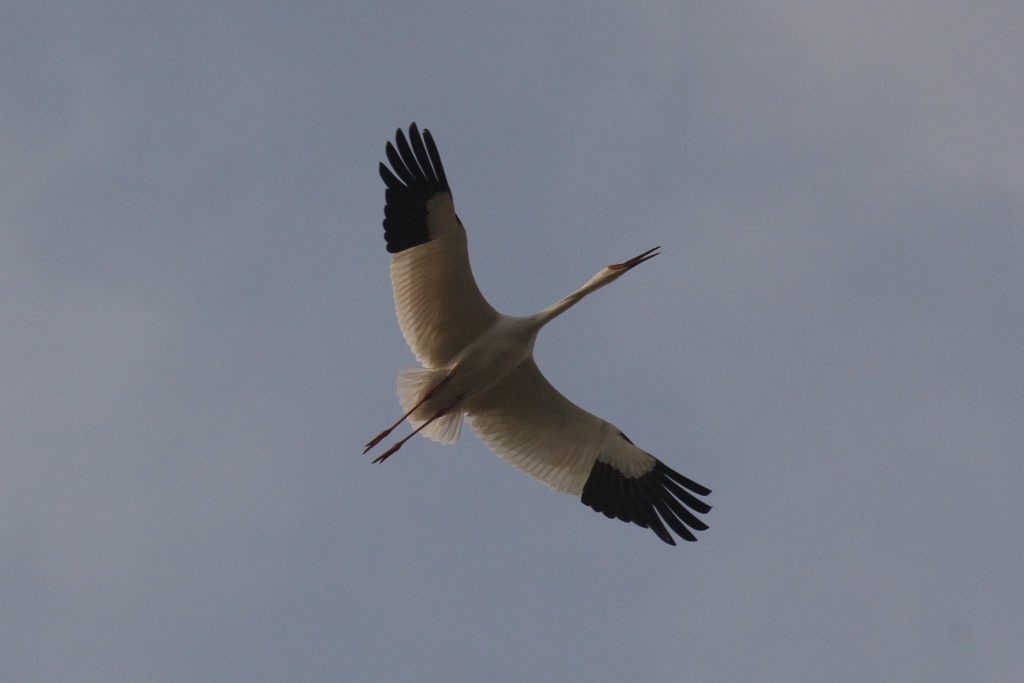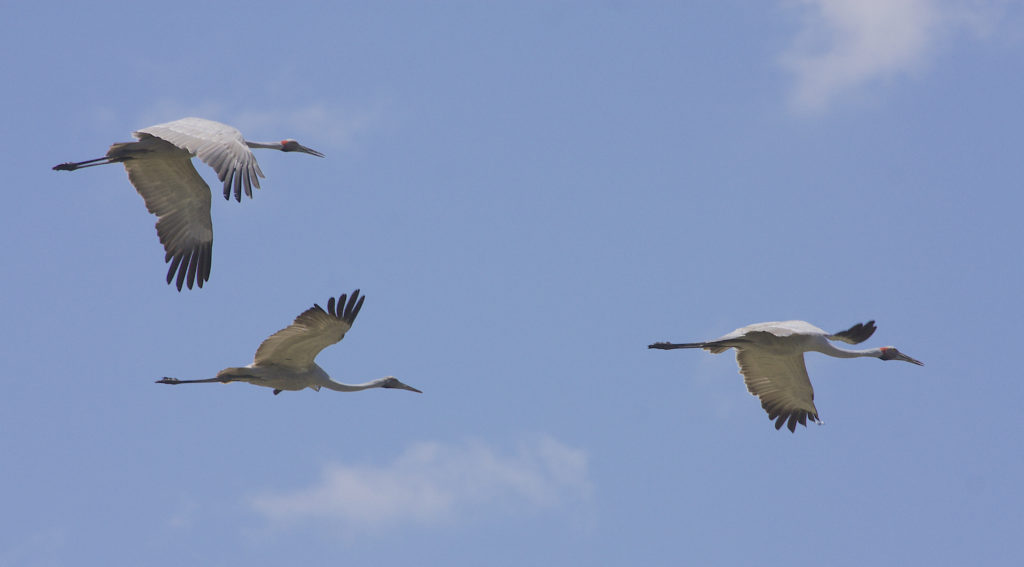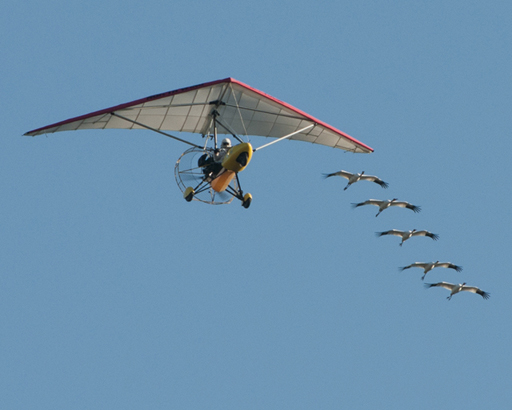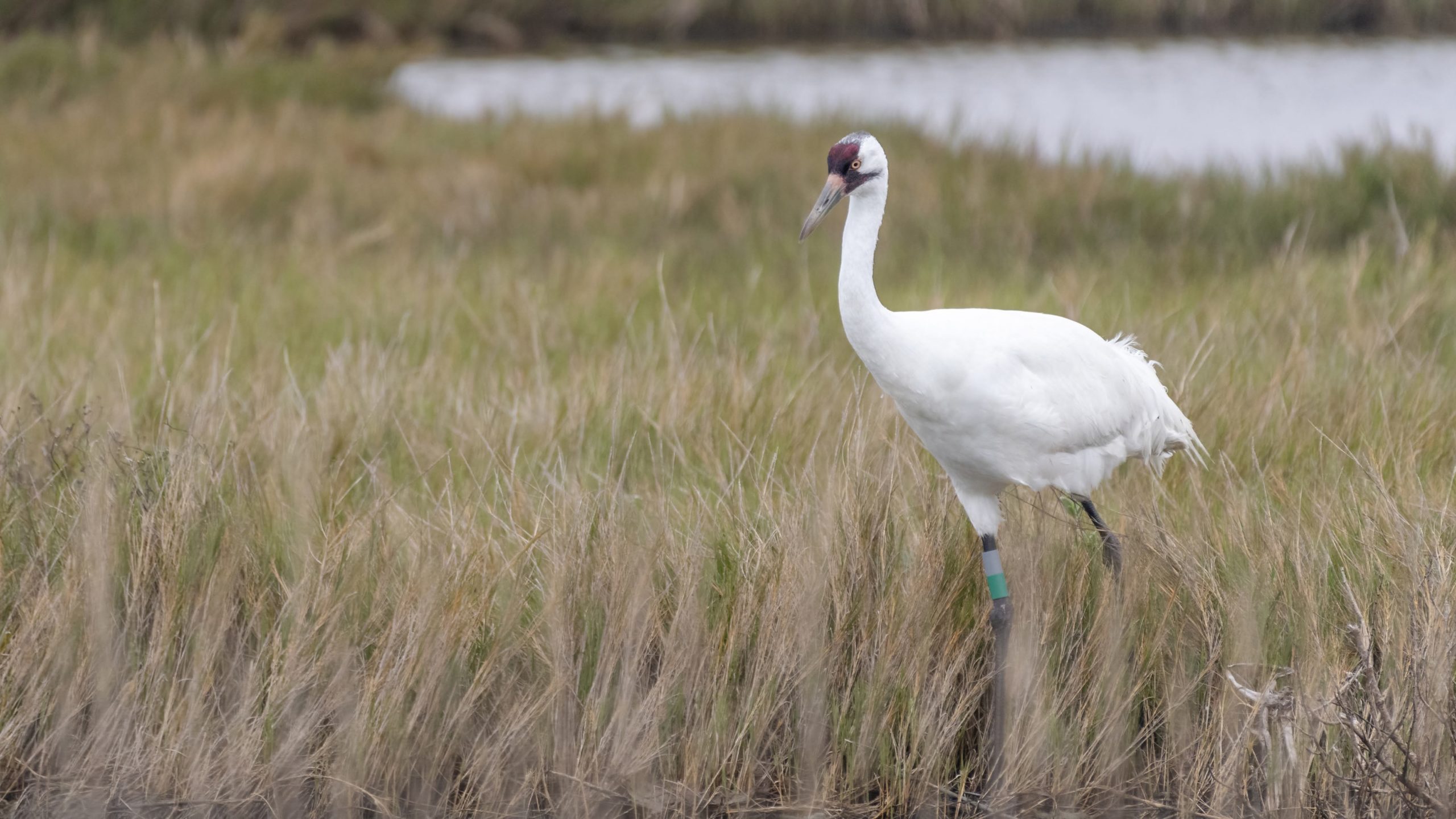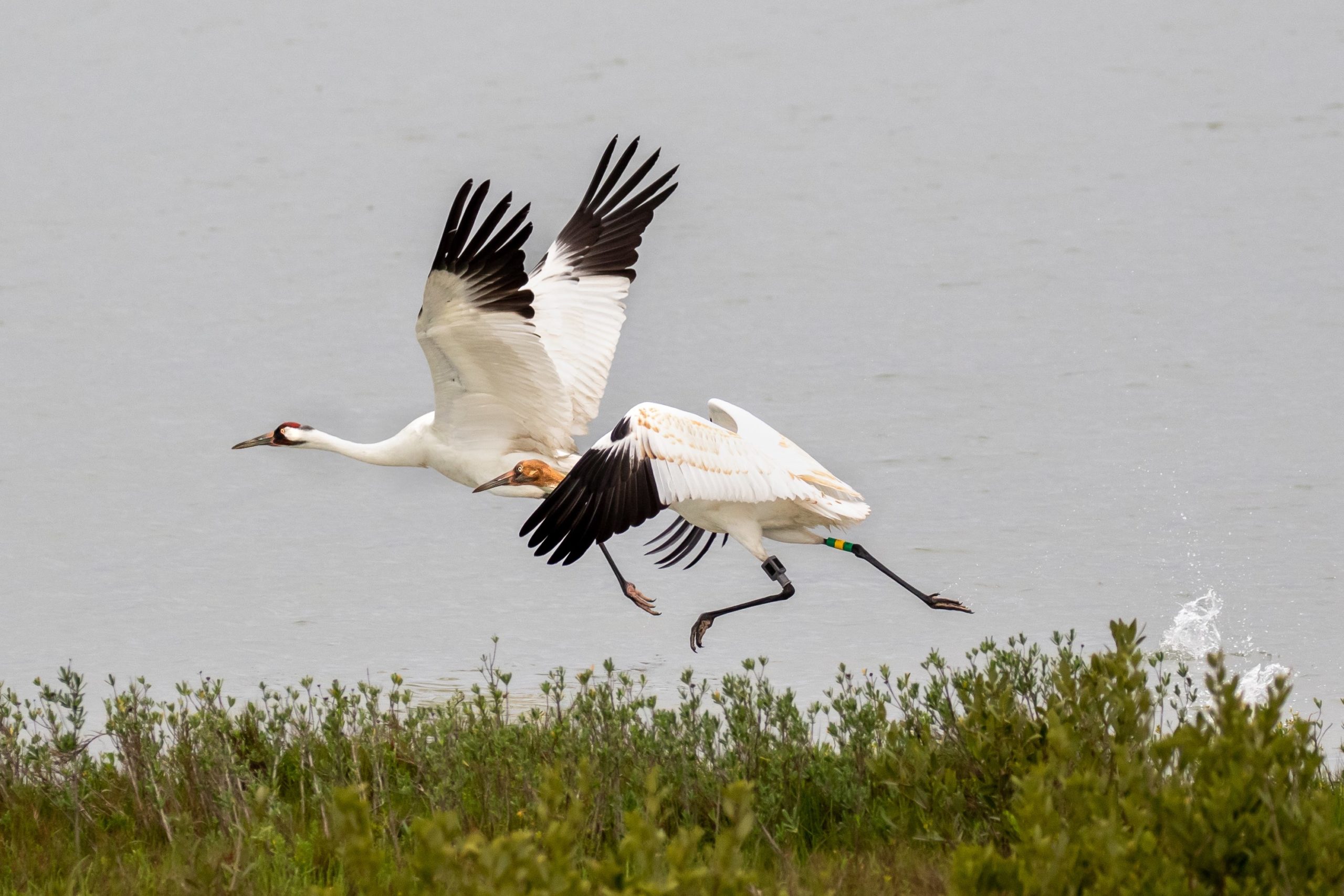Discover 13 Cranes on 5 Continents with Naturalist Journeys in 2023
The crane family tree has just 15 branches, but these elegant, giant, marsh-nesting birds loom large on each of the five continents where they are found.
That’s particularly true in Asia, home to eight crane family species, where crane iconography seems to be everywhere: Cranes can be found flying, dancing and striking a pose on coins and paper money, in paintings, pottery, sculpture and even architecture. Japan, where tens of thousands of cranes overwinter is particularly enamored of cranes.
Birds in the Crane Family are Large and Loud
Cranes are exceptional in so many ways. The crane family (Gruidae) is an ancient one, dating back 60 million years. They are among the largest birds, and even the smallest, the Demoiselle Crane, dwarfs most birds at 39 inches. The largest crane family member, the Sarus, tops out at 5’9”, taller than many people in their home range countries of India and Australia. Cranes are also loud, as anyone who has experienced a flock of Sandhill Cranes flying in to roost can confirm. Adult cranes’ bugling or trumpeting call is used for signaling family and flock members more than two miles away.
Cranes Can Dance When They Want To
Graceful fliers, cranes mate for life and yet continue to court their partners with dance and vocalizations, teaching their young colts to dance at a very young age, even though they won’t mate for several years. Cranes dance not only during courtship, scientists say, but also “when they are excited, frustrated, or just need to release pent-up energy.”
Cranes in Profile
When standing or strutting, their enormous feathered wings are usually gathered into a bustle behind them, which disappears entirely when their wings are busied in flight. Unlike herons, who tuck in their necks when aloft, cranes fly with their elegant necks outstretched, one easy way to tell these large birds apart in silhouette. Another striking crane posture can be seen when pairs are engaged in unison calls, with their heads tipped back, as depicted here in an illustration published by the University of Nebraska:
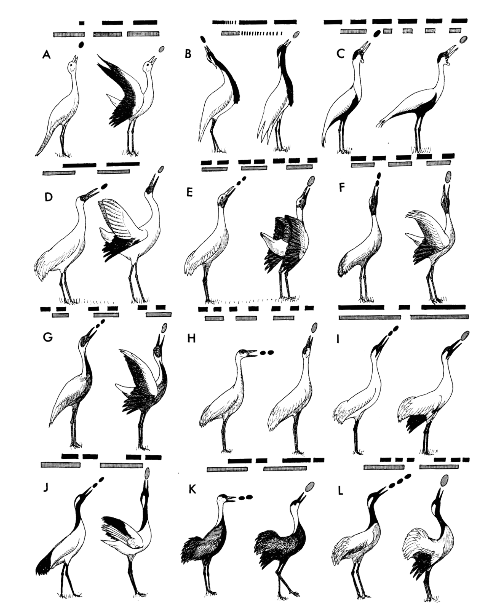

Crane Habitat (and Most Cranes) are Threatened
Cranes nest in marshy wetlands, a habitat that is rapidly being repurposed worldwide to grow field crops, for aquaculture or for urbanization. So it’s no surprise that most members of the crane family are listed by the International Union for the Conservation of Nature (IUCN) as vulnerable (7 species), endangered (3 species) or critically endangered (1 species). Only four species are designated by IUCN as species of least concern.
Happily, we have chances (some great, some very slim) to see thirteen of the fifteen crane family members on a range of tours throughout North America, Europe, Asia, Africa and Australia, all of which contribute directly or indirectly to crane conservation. In this blog, we’ll describe each of the crane family species in turn and describe for you the tours where we hope to find them.
Cranes of Japan – Three Likely, Six Possible Species
We begin with our crane-tastic Japan Birding & Nature Tour, a scenic snowy adventure designed specifically to witness the masses of White-naped and Hooded Crane that overwinter on the Japanese archipelago, along with the star of this tour, Red-crowned Crane.
Rare and critically endangered Siberian Crane was unexpected but welcome for our inaugural Japanese tour group in January of 2023. Siberian Crane is the only member of the crane family credited with a true song. Its calls are more flutelike, less a honking or trumpeting.
Our inaugural Japan tour was also pleasantly surprised to see single birds of two other species: Demoiselle and Sandhill Crane, from a Siberian population separate from those we see in North America. One one auspicious day of this tour, our group saw five different crane species!
Japan Birding & Nature
Nov. 29 – Dec. 15, 2023 & Jan. 7 – 23, 2024 | $7390 w/Guide Bryan Shirley
Inaugural 2023 Trip Report | Species List | Full Itinerary
Japan offers a fantastic array of birding and nature opportunities—from the wintering cranes in Kagoshima to the world-famous Snow Monkeys in Jigokudani and so much more, from birds to gorgeous snowy mountain landscapes, to sublime culinary and cultural delights!
Cranes of Australia: Two Possible Species, Sarus and Brolga
We have good chances to see both of Australia’s two crane species on our Queensland’s Wet Tropics Tour, the Sarus and the Brolga.
The Sarus Crane, as noted before, is the tallest crane in the world. Watching this massive crane fly, dance and call in unison with a lifelong partner is spectacular almost beyond words. Two non-migratory groups of Sarus Cranes persist, one in India in addition to those of far Northeast Queensland. We also have a chance for Sarus on our Grand India Tigers & Glorious Birds tour.
The Brolga, though twenty inches shorter than the Sarus, is still an impressive specimen at 49 inches tall. More widespread on this island continent, it is sometimes called the Australian Crane. Also found in New Guinea, its official species name is derived from the indigenous name, burralga.
Australia: Queensland’s Wet Tropics
Aug. 13—22, 2023 & July 7 —16, 2024
Exploring North Queensland and the Daintree Region is legendary among birders, with so many species ranking off the charts for color, beauty and song. This is a lush coastal area that combines mountain, rainforest and ocean birding in Australia’s most fertile area. The driving routes are spectacular and not long, so you have plenty of field time to take it all in. Interspersed with forest and coastal walks are boat trips and an ocean cruise to experience the Great Barrier Reef.
Bhutan: Migratory Black-necked Crane is Possible
Our Bhutan tour has an outside chance to see Black-necked Crane, a migratory species that nests in Tibet. It is 53 inches in height and considered vulnerable due to rapid wetland habitat loss. A sacred bird in Bhutan, it’s the world’s only alpine crane, feeding on dwarf bamboo there in the Phobjikha Valley wetlands, where they overwinter.

Africa, A Great Continent for Cranes: Four of Six Possible Species on Tours in South Africa, Uganda, Kenya and Botswana
Six crane species can be found in Africa and we have chances for four of them on our tours: Gray-crowned (South Africa, Uganda, & Kenya); Blue Crane (South Africa & Namibia); Wattled (S. Africa & Botswana) and Common Crane (Morocco and also throughout Europe and on our Israel tour). Demoiselle, which overwinters in North Africa and Black-crowned Crane, the smaller of the two crowned crane species, are unlikely to be spotted on our current Africa tours.
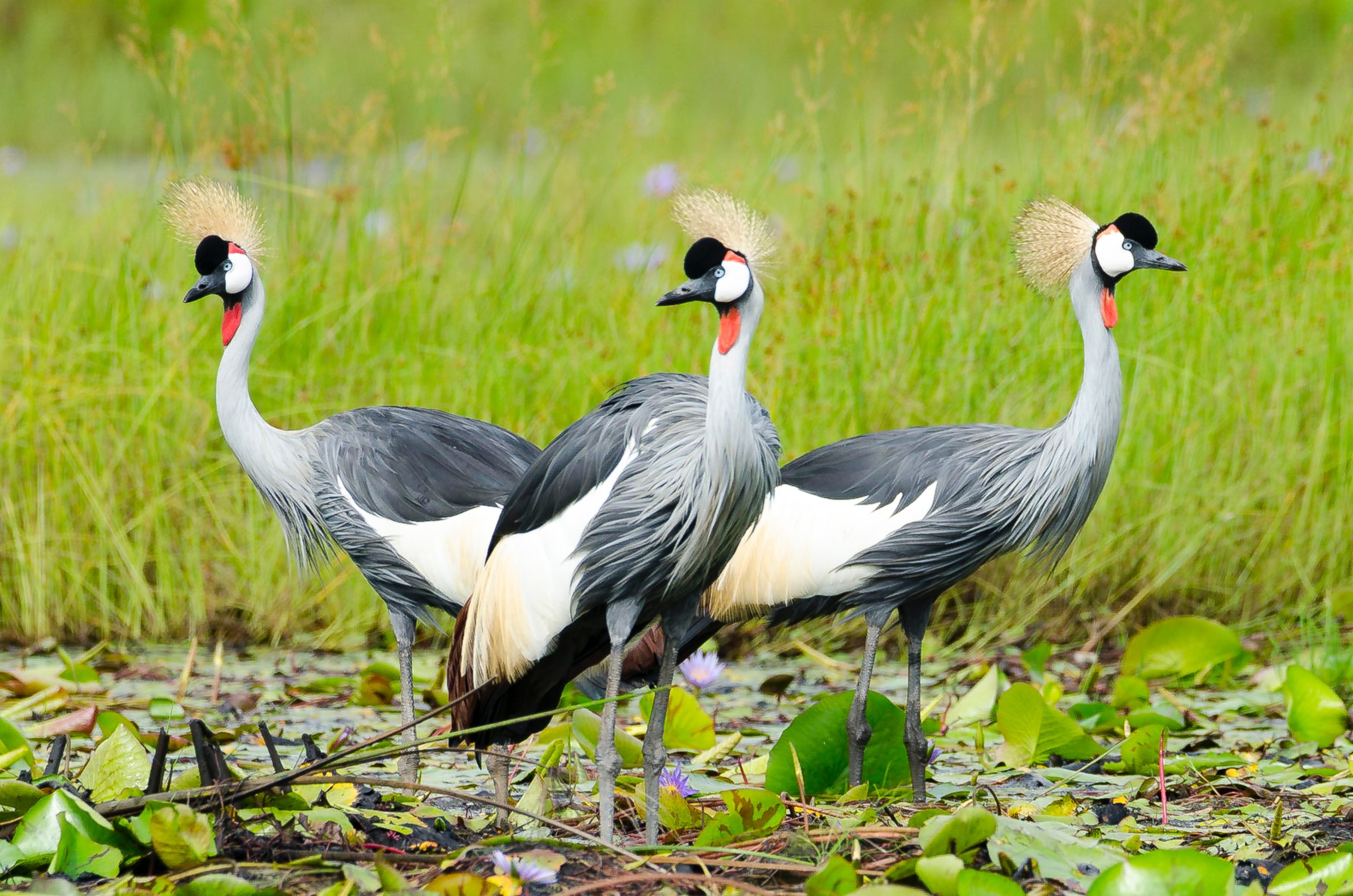
Cranes are deeply woven into the fabric of Africa and its folklore. Blue Crane is South Africa’s national bird, earning top billing among 850 avian choices. Many tribes consider the bird sacred, off-limits for hunting, and gather its feathers to award to their bravest tribesmen to wear in their hair.

Uganda’s national bird is the striking Gray-crowned Crane. We may see it on our tours to Uganda and also our Kenya and South Africa tours. It also lives in Zambia. With a stiff crown of golden feathers, black heads, white cheeks and bright red gular sacs, Gray-crowned Crane is regal indeed. But several other things set apart the crowned cranes of Africa:
- They are the most ancient of crane species, by tens of millions of years.
- They are the only cranes to roost in trees, enabled by a prehensile hind toe.
- They have larger clutches than most cranes, hatching as many as 5 eggs.
- Their striking appearance has made poaching of live birds and eggs for the pet trade one of the species’ biggest threats.
Wattled Cranes: South Africa & Botswana tours
The largest crane in Africa and the tallest flying bird, the Wattled Crane also has a distinctive, (though a bit less regal) appearance. A bumpy featherless face and its namesake dangling flap of chin skin easily distinguish it from other African cranes. Like its closest relatives in the crane family, the Demoiselle and the Blue Crane, the Wattled Crane has prominent secondary wing feathers that, when gathered into its bustle, give the appearance of a down-curved tail.
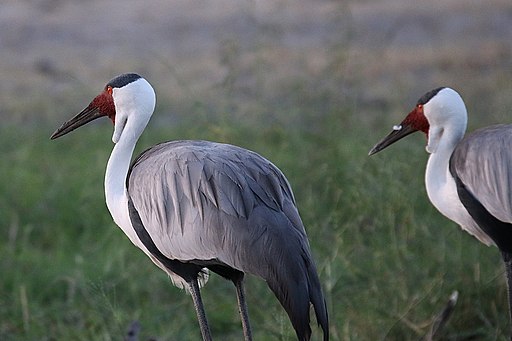
Wattled Crane often submerges its entire head to dig for plant roots and tubers, and is much more dependent on areas of standing water than other African cranes, putting it at greater threat for habitat loss. Wattled Crane also only fledges one chick on average. Their young take longer to hatch and fledge than other cranes, increasing the species’ vulnerability.
Africa Tours with Crane Family Chances:
Deltas to Dunes: A Namibia-Botswana Safari
Sept. 1 – 19, 2023 | $8990 w/guide Bryan Shirley
See two countries, close geographically but very different, each boasting distinct birds and mammals, with beautifully divergent landscapes on our Delta to Dunes Safari. The expansive Okavango Delta and stunning red dunes at Sossusvlei are two of the most iconic Africa experiences and the gorgeous backdrop to an unbeatable birding and wildlife safari.
Grand Uganda: Fabulous Birds & Mammals
July 13 – 29, 2023 | $8290 w/Gerard Gorman
Uganda Highlights: Fabulous Birds & Mammals
Nov. 22 – Dec. 5, 2023 |$6790 w/Andrea Molina & Peg Abbott
Birding in a rich mix of habitats is at the heart of our July and November tours to Uganda, from the shores of Lake Victoria to the Mabamba Swamp (for Shoebill!) to lush forests skirting the beautiful Virunga Volcanoes. We have chances to see a great mix of birds and mammals, including Chimpanzees and the opportunity, for those that can hike, to see endangered Mountain Gorilla. Uganda’s forests trace the spine of the continent and we delight in exploring them! We also visit Murchison Falls National Park, where we experience the classic savanna and safari.
South Africa: Birding & Wildlife Safari
Sept. 27 – Oct. 11, 2023 | $6490 DBL w/Mason Flint
We call South Africa a “Sampler” tour as it blends birding with botany, witnessing wildflowers of Cape Town’s famous fynbos region and in the mountains of the Drakensberg Escarpment. South Africa has modern infrastructure and great food and wine, making it a very comfortable journey. We often find 350 or more bird species as well as numerous mammals in this mega-biodiversity nation. Experience a short “big-five” safari in legendary Kruger National Park. Sprinkle in the culture, culinary delights and gorgeous Table Mountain-meets-coast delight of Cape Town and it’s time to start looking for flights!
Common Crane: Possible in Africa, Much More Likely on Europe and Israel Tours
Though Eurasian/Common Crane may be seen in northern Africa, we are much more likely to spot it where most of its population lives and breeds: throughout Europe. With an estimated population of 700,000 cranes worldwide, they are among the least threatened members of the crane family. Great news!

We are likely to see Common Crane in 2023 on our Finland-Norway, Austria-Hungary, Romania-Bulgaria and Spain fall migration tours.
Finland & Norway Birding & Nature
June 3 – 15, 2023 | $6295 from Oulu w/Gerard Gorman
Join us in Finland and Norway as we explore the Scandinavian Arctic’s coastline and boreal forests at the height of spring nesting season.We look for lekking Ruff, Boreal Owl, Red-flanked Bluetail, Siberian Jay, Black Grouse, Western Capercaillie and so many more!
Birds, Nature & Culture in the Heart of Europe
June 19 – 30, 2023 | $3990 from Vienna w/Gerard Gorman
Get your Sound of Music on with a stroll through Austria’s alpine foothills, meadows and lakeshore before crossing into Hungary’s rolling limestone hills, plains and wet woodlands. We bird a thrilling variety of habitats on this 11-night tour, bookended by the cosmopolitan capitals of Vienna & Budapest.
Spain Birding & Nature
Sept. 3 — 15, 2023 | $5,490 from Malaga
This fall migration tour is centered Andalusia, whose Strait of Gibraltar is a natural bottleneck for migrant birds headed to Africa. A warm and wonderful place for a fall tour, its landscape is almost tropical, a mixture of palms, stone pines, and subtropical flowering trees. We make time to experience many cultural, architectural, and culinary delights of Spain!
Romania & Bulgaria: Black Sea Coast Migration
Sept. 15 — 25, 2023 | $3,390 from Bucharest w/Gerard Gorman
Timed for peak fall migration on this lesser-explored flyway, we divide our time between the gorgeous Black Sea Coast of two fascinating countries and bird Europe’s only steppe, among many other inland habitats including the wetlands around Bourgas and the broad-leaved woodpecker-rich forests of the Strandzha Hills.
Two Cranes Call the US Home: Sandhill & Whooping
Finally, circling back to the United States, we find two charismatic crane species, one with a thriving population and another endangered but considered in recovery mode.
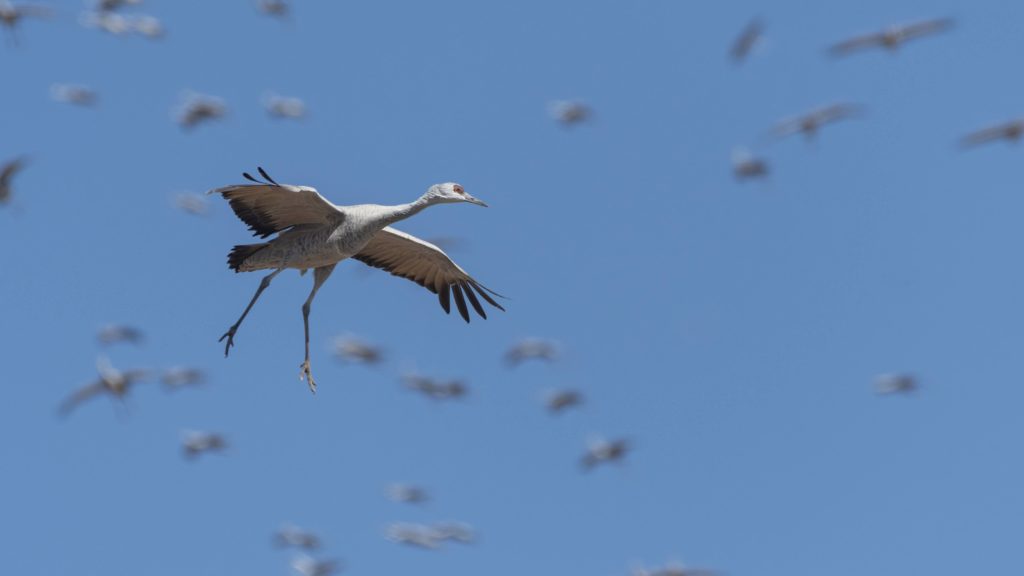
The first, of course, is the Sandhill Crane, whose large and vocal flocks many of us have been privileged to experience flying overhead. Our guests in Arizona, New Mexico and Texas see them while they are overwintering and we have special spring tours to an important staging ground for Sandhills on Nebraska’s Platte River. In their nesting ranges, our Yellowstone National Park guests sometimes get to see young Sandhill Crane families, with doting parents taking their colts for a walk!
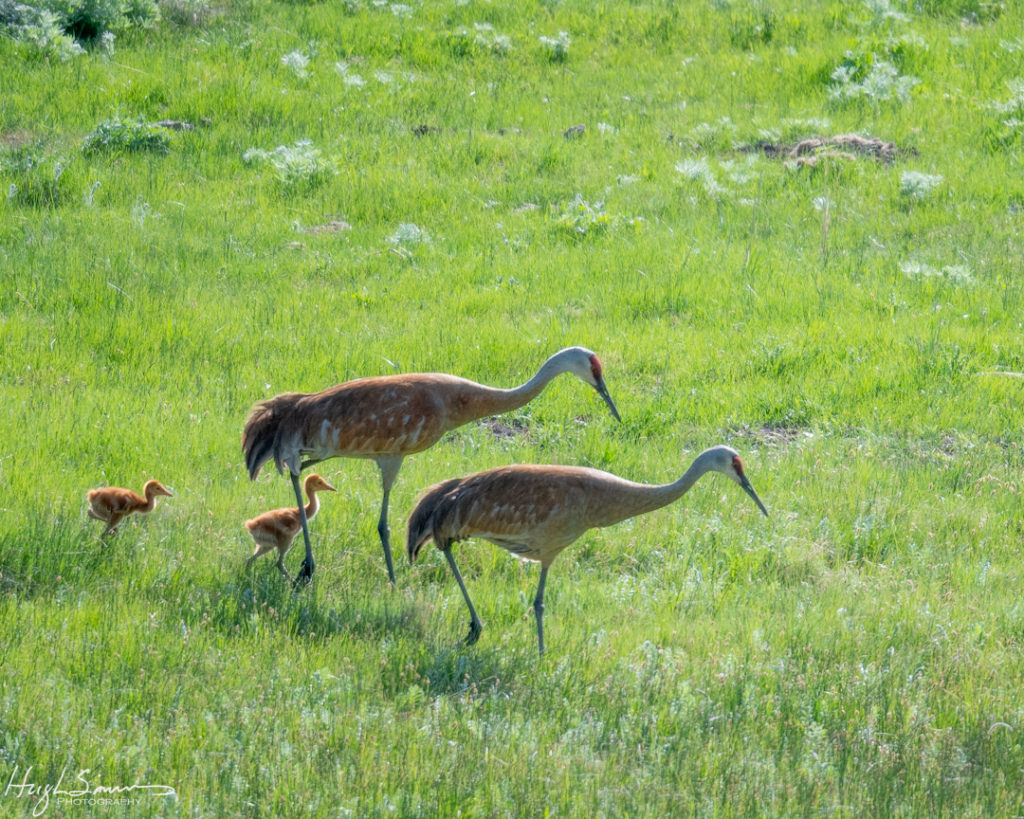
Whooping Crane, with an estimated population of just 849 birds, is listed as endangered by the IUCN but is one of just five species whose population is considered on the rise, thanks to tremendous conservation efforts. Many dedicated people and organizations have helped bring this bird back from the brink of extinction in 1941, when there were just 15 known birds.
Our Texas guests have their best chances to see Whooping Crane during winter tours there. Texas native and guide for our South Texas tours Bryan Calk said Mid-November to late-March is the sweet spot.
“I got them on all of my three winter tours, but only by the skin of my teeth on the first one in November, they were our boat captain’s first for the season, super lucky. The March tour will very likely get them too,” he wrote. Whoopers also occasionally turn up on our Platte River tours amidst the Sandhills, and we always feel fortunate to see them!
South Texas Birding & Nature
Dec. 2 —10, 2023 | $2,990 w/Bryan Calk
South Texas is one of the greatest birding destinations in the United States, and for good reason. Due to its proximity to the humid tropics of Mexico, the subtropical woodlands of the Rio Grande Valley boast over two dozen tropical bird species that spill across the border, from chachalacas to pauraques. Here, colorful Great Kiskadee and personable Green Jay mingle with temperate species and nowhere else in the United States.
How You Can Help Protect Cranes
Naturalist Journeys tours help fulfill the promise of ecotourism, demonstrating that protecting wild lands and wildlife is beneficial for local people. We also make contributions that aid conservation in the special places we visit. We currently contribute to the Rowe Audubon Sanctuary and The Crane Trust (of Nebraska). Other worthy organizations that are working to protect cranes worldwide include the International Crane Foundation.
Read more about crane conservation on the IUCN Crane Portal.

